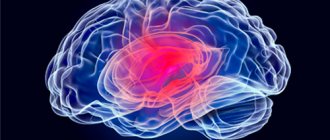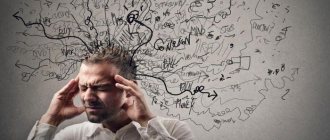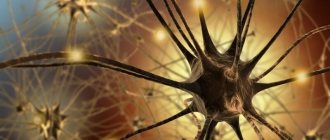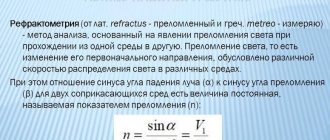Music therapy
involves the use of music to produce positive changes in mood and overall well-being. Music therapy can involve making music with instruments of all types, singing, moving to music, or simply listening to music.
Music has a powerful effect on cognitive function. Different styles of music can have a significant impact on mood, which evoke a wide range of emotions, from happiness to excitement, as well as sadness, calmness and thoughtfulness.
What is music therapy?
Music therapy uses music to improve well-being. It is an alternative to other types of therapy such as counseling or cognitive behavioral therapy (CBT).
Music therapy helps improve communication skills, independence, self-awareness, and concentration and attention skills.
Live musical interaction between patient and therapist is very important during music therapy. Improvisation can also be a key part of music therapy, which involves creating music in response to mood.
The way music affects the brain is very complex. All aspects of music—including pitch, tempo, and melody—are processed by different areas of the brain.
For example, the cerebellum processes rhythm, the frontal lobes decode emotional signals created by music, and a small part of the right temporal lobe helps understand pitch.
The brain's reward center, called the nucleus accumbens, can even produce strong physical signs of pleasure, such as goosebumps.
Music therapy can harness the body's deep physical responses to music to help patients with mental illness.
Music therapy in working with children article
Music therapy in working with children
The term “music therapy” is of Greek-Latin origin and is literally translated as “healing through music.” Music therapy is used both for the treatment and rehabilitation of children and adults with somatic and mental illnesses. Music is widely used in psychocorrectional work with children and adolescents during group or individual lessons.
The healing power of music has been known since ancient times. Pythagoras was the first to appreciate the healing effect of sounds. He proposed the concept of “musical medicine”. The great scientist used some melodies “to heal the passivity of the soul, so that it would not lose hope and mourn itself,” other melodies “against rage and anger, against the delusions of the soul.” Another philosopher, Plato, said that music can serve as psychohygienic prevention.
The medieval scientist Avicena paid great attention to issues of music. Describing insomnia, Ibn Sina suggested music as a sedative and prescribed “pleasant, gentle singing at a slow tempo,” as well as “the murmur of water or the rustling of leaves.”
The turn of the 18th-19th centuries became a rebirth for music therapy: clinicians and physiologists joined its development. According to their observations, music can influence breathing, heart rate, pulse and blood pressure, relieve muscle tension, stimulate digestion, as well as change breathing rate and body temperature, regulate the release of hormones that reduce stress, activate immune function and reaction speed... And also change the perception of time and space.
At the beginning of the 20th century in St. Petersburg, scientists from the Psychoneurological Institute established a special commission to study the influence of music on living organisms and humans. In 1914, Academician V. Bekhterev made a report at a meeting of this commission, where he pointed out that musical melodies help in the fight against increased neurosis and whims, to which children are especially susceptible.
In the middle of the 20th century, music therapeutic societies and centers began to be organized in the USA and European countries. In the 70-80s, several monographs were published on music therapy, in which there were sections on the use of music for therapeutic purposes for children who suffer from neuroses (K. Schwabi), early childhood autism (Benenzon), organic diseases of the brain (E .Coffer-Ulbrich). A study was also conducted on the objectivity of the influence of music on children (U. Grews, G. Grews, Z. Müller, J. Brückner, I. Mederake and K. Ulbrich).
It should be emphasized that in Russia, music therapy was recognized by the Ministry of Health as an official method of treatment in 2003. Music therapy, together with art therapy, can become an effective method of treating school neuroses, which today increasingly affect students, both in the process of obtaining an education and in modern life in general.
Our brain perceives music simultaneously with both hemispheres: the left hemisphere perceives rhythm, and the right hemisphere perceives timbre and melody. Rhythm has the most powerful effect on the human body. The rhythms of musical works range from 2.2 to 4 vibrations per second, which is very close to the frequency of breathing and heartbeat. The body of a person listening to music, as it were, adapts to it. As a result, mood and performance improve, pain sensitivity decreases, sleep normalizes, and a stable heart rate and breathing rate is restored. By the way, music has a beneficial effect not only on humans, but also on animals and even plants.
Since the perception of music is provided by both hemispheres, each of which regulates different functions, the integral experience of music is provided by the integration of specialized cognitive and emotional processes occurring in both hemispheres. Consequently, the perception of music causes an increase in intercentral and interhemispheric interaction, i.e. brain integration. Moreover, the perception of music can occur both at a conscious and subconscious level, since the analysis of frequency-time relationships of acoustic signals is carried out in both forms of perception (wikipedia.org).
The variety of physiological reactions that occur in the human body as a result of musical therapeutic effects is primarily due to the complex mechanism of acoustic reception. It is known that music as a physical phenomenon represents in each specific case a certain set of sound signals, the perception of which is conventionally divided into auditory and vibrotactile components. The auditory component of reception is implemented by an auditory analyzer and provides the perception of frequencies of acoustic signals from 16 to 20,000 Hz. At the same time, the sounds of music are perceived and undergo complex processing in the auditory analyzer, in particular in the cortical structures of the brain. It is shown that the emerging reactions of auditory adaptation give rise to certain associations and aesthetic experiences that actively influence the psycho-emotional state of a person. Emotions, the dynamics of which always lead to certain hormonal and biochemical changes, indirectly begin to influence the intensity of metabolic processes, the respiratory and cardiovascular systems, brain tone, and blood circulation.
Music can be used when working with any developmental disorders in children and adolescents, but music therapy is usually used to correct emotional disorders. “The psychological literature identifies four main directions of the corrective effects of music therapy:
1. Emotional activation during verbal psychotherapy.
2. Regulatory influence on psycho-vegetative processes.
3. Development of interpersonal communication skills.
4. Increasing aesthetic needs.
The authors indicate the following psychological mechanisms of the psychocorrectional effects of music therapy:
- catharsis - emotional release, regulation of emotional state;
— mastering new ways of emotional expression;
— increasing social activity, etc.” (Mamaichuk I.I.).
Music therapy is organized in individual and group forms. Each of these forms can be presented in three types: receptive, active, integrative music therapy.
Receptive (passive) music therapy is characterized by the fact that the child in a music therapy session participates relatively actively in direct action. In receptive music therapy, there are two types: music psychotherapy, music somatotherapy.
Normalization of the psycho-emotional state through the perception of music is ensured by a person’s exit from negative experiences, filling him with positive emotions, reconstructing his emotional state and cognitive sphere.
The perception of music can be expressed in various forms. For example, in the form of so-called “musical dreams,” which are a variant of non-directive meditation. After listening to musical works of different nature, a conversation is held with the child about the content of what he “dreamed about.” Analysis of the images that have arisen in a child can show his condition, and then the dynamics of correction of the psycho-emotional state.
Active music therapy involves the active inclusion of the child in the music therapy process through singing (vocal therapy) or movement (kinesitherapy - dance therapy, choreotherapy) and playing musical instruments (instrumental music therapy). Active participation in the music therapy session by the child himself, who gets the opportunity to express himself, his immediate state by singing, moving, playing an instrument, leads to the resolution of internal conflict and, as a result, to the stabilization of the psycho-emotional state, to the regulation of body functions.
“When working with children, it is advisable to use both options of musical psychocorrection. Active is widely used in group classes for the purpose of group cohesion and the effectiveness of group interaction. For example, choral singing, performing musical works on musical instruments or using spoons, combs, etc.
It is advisable to use receptive music therapy to solve specific psychocorrectional problems: optimizing communication among group members, creating a trusting, empathic atmosphere in the group, reducing emotional discomfort, etc.” (Mamaichuk I.I.)
For calming and relieving emotional stress. The sounds of the flute, violin and piano have a relaxing effect. The sounds of nature (the sound of the sea, the forest) and waltzes (three-quarter rhythm) have a calming effect. Classics: Works by Vivaldi, Beethoven “Symphony 6” – part 2, “Moonlight Sonata”, Brahms “Lullaby”, Schubert “Ave Maria”, Chopin “Nocturne in G minor”, Debussy “Light of the Moon”, “Sweet Dreams” by Tchaikovsky, “Sad Waltz” by Sibelius, “Fantasy-Impromptu” by Chopin.
Reducing feelings of anxiety and uncertainty. Major melodies, below average tempo. Folk and children's music helps to find temporary security. Ethnic compositions can have a good effect. Classics: Chopin “Mazurka” and “Preludes”, Strauss “Waltzes”, Rubinstein “Melodies”.
Reducing irritability and nervous agitation. Classics: Bach “Cantata 2” and “Italian Concerto”, Haydn “Symphony”, Beethoven “Moonlight Sonata” and “Symphony in A Minor”, Wagner “Pilgrim Choir”, Tchaikovsky “Sentimental Waltz”.
To relieve depressive moods and improve mood. Violin and church music. Classics: Works by Mozart, Handel “Minuet”, Bizet “Carmen” - part 3, “To Joy” by Beethoven, “Ave Maria” by Schubert.
To raise overall vitality, improve well-being and activity. Sluggish people need rhythmic, invigorating music. You can use various marches: listening to them increases the normal rhythm of the human heart in a calm state, which has an invigorating, mobilizing effect. Classics: Tchaikovsky “Sixth Symphony” - part 3, Beethoven “Edmond Overture”, Chopin “Prelude 1, opus 28”, Liszt “Hungarian Rhapsody 2”.
To increase concentration - “The Seasons” by Tchaikovsky, “Moonlight” by Debussy, “Reverie” by Schumann.
To relieve migraines, headaches and other pain. Religious music. Classics: Mozart “Don Giovanni” and “Symphony No. 40”, Liszt “Hungarian Rhapsody 1”, Khachaturian “Masquerade Suite”, Beethoven “Fidelio”, Gershwin “An American in Paris”.
For insomnia, for a restful and sound sleep. Sibelius “Sad Waltz”, Schumann “Dreams”, Gluck “Melody”, as well as plays by Tchaikovsky. If, for example, your baby doesn’t sleep well, you can play soft music with a slow tempo and a clear rhythm while he sleeps.
Of course, you don’t have to listen only to classical music; you can choose other styles. But as the experience of psychologists working with music therapy shows, “it is classical music that has a “basic”, deep and long-lasting effect, significantly accelerating the treatment process,” which means it is much better at helping to achieve the desired effect even with ordinary “home” use.
The effectiveness of music therapy has long been confirmed. A teacher can use music as a therapeutic method and as a background when performing various exercises and games.
During group classes, music helps set the general mood, unite participants, and increase the level of empathy. The active form of music therapy can be considered a projective method. However, in addition to a positive attitude towards music in children, one can also observe a negative one, which is sometimes due to the negative associations that music causes in a child, his unpreparedness to perceive music, as well as individual psychological characteristics. “When selecting musical works, it is necessary to take into account the psychological properties of the nervous system of persons exposed to music” (Rogov E.I.).
- Mamaichuk I. I. Psychocorrectional technologies for children with developmental problems. - St. Petersburg: Rech, 2006. - 400 p.
- Petrushin V.I. Musical psychotherapy: Theory and practice: Textbook. aid for students higher textbook establishments. – M.: Humanite. ed. VLADOS center, 1999. – 176 p.
- Rogov E.I. Handbook for a practical psychologist: Textbook. manual: In 2 books. — 2nd ed., revised. and additional — M.: Humanite. ed. VLADOS Center, 1999. - Book. 2: Psychologist’s work with adults. Corrective techniques and exercises. — 480 s: ill.
- https://ru.wikipedia.org/wiki/%CC%F3%E7%FB%EA%EE%F2%E5%F0%E0%EF%E8%FF
- https://slovari.yandex.ru/%D0%BC%D1%83%D0%B7%D1%8B%D0%BA%D0%BE%D1%82%D0%B5%D1%80%D0%B0 %D0%BF%D0%B8%D1%8F/%D0%9A%D0%BB%D0%B8%D0%BD%D0%B8%D1%87%D0%B5%D1%81%D0%BA% D0%B0%D1%8F%20%D0%BF%D1%81%D0%B8%D1%85%D0%BE%D0%BB%D0%BE%D0%B3%D0%B8%D1%8F/ %D0%9C%D1%83%D0%B7%D1%8B%D0%BA%D0%BE%D1%82%D0%B5%D1%80%D0%B0%D0%BF%D0%B8%D1 %8F/
History and origins of music therapy
Music has been a part of human life for thousands of years. In particular, scientists discovered tools dating back more than 40,000 years ago. This suggests that people's desire to express themselves or communicate through music runs deep.
The use of music for therapy and healing dates back to Ancient Greece, but its therapeutic use began in the 20th century, after the end of World War II. The earliest mention of music therapy is in a 1789 article entitled “Music Viewed Physically.”
During the 1800s, medical research into the therapeutic nature of music grew, and by the 1940s, universities were offering music therapy programs. E. Thayer Gaston pioneered the use of music as a therapeutic tool and organized and promoted the practice to become a common form of treatment.
There are now many types of music therapy around the world.
Music therapy
Music therapy is a psychotherapeutic method that uses music as a therapeutic agent. The therapeutic effect of this technique is based on the frequency vibration of musical sounds that resonate with individual organs, systems or the entire human body as a whole.
There are four main directions of the therapeutic effect of music therapy:
- Emotional activation during verbal psychotherapy
- Development of interpersonal skills (communication functions and abilities)
- Regulatory influence on psycho-vegetative processes 4) Increasing aesthetic needs
Mechanisms of the therapeutic effect of music therapy: catharsis, emotional release, regulation of emotional state, facilitating awareness of one’s own experiences, increasing social activity, acquiring new means of emotional expression, facilitating the formation of new relationships and attitudes.
Music therapy comes in two main forms: active and receptive. Active music therapy is a therapeutically oriented, active musical activity: reproduction, fantasy, improvisation with the help of the human voice and selected musical instruments.
Receptive music therapy involves the process of perceiving music for therapeutic purposes. It is carried out in three forms: 1) Communicative (listening to music together, aimed at maintaining mutual contacts, mutual understanding and trust) 2) Reactive (aimed at achieving catharsis) 3) Regulatory (helping to reduce neuropsychic tension).
Organization of classes.
Lesson duration is 1.5-2 hours. One lesson consists of 3 blocks: listening to music, singing, playing musical instruments.
1. Listening to music. Group members are invited to listen to specially selected musical works, and then discuss their own experiences, memories, thoughts, associations, fantasies that arise during listening. In one lesson, they listen, as a rule, to three works or more or less completed excerpts (each for 10-15 minutes). Musical programs are built on the basis of gradual changes in mood, dynamics and tempo, taking into account their different emotional load.
2. Vocal therapy: choral singing, breathing exercises. Working with sound (height, longitude, strength), rhythm, breathing, intervals, emotional, expressive, figurative saturation of a song not only leads to a therapeutic effect, but also shapes, changes a person’s condition, and increases immunity to stress. Vocal and singing exercises are a gentle and effective method of treating mental illness and nervous disorders. The organs involved in voice formation are technical executors of orders from the central nervous system. In general, the singing process is a complex psychophysical act. Good singing is based on the correct functioning of the vocal and respiratory apparatus, it makes it possible to use the emotional mood to its fullest. Singing is closely connected with the emotional sphere; it is a musical experience of the state of the singer. The use of a diverse repertoire, including folk, classical and modern vocal works, helps to achieve maximum emotional response and psychotherapeutic effect.
3. Improvisation: playing musical instruments, composing songs, performing them with movements (round dances, etc.), rhythmic recitation. The therapeutic value of the improvisation process cannot be overstated. The results of this therapy are multifaceted: increased self-confidence, escape from self-isolation, improved listening and hearing skills. Improvisation also releases creative, deeply hidden means of expressing feelings.
You can contact the clinic’s specialists by phone in Moscow.
Find out the cost of consultation
Music therapy and other psychotherapy methods
Music therapy does not rely on verbal communication, so it can be beneficial for people with verbal communication disorders. This may be due to a disability, a neurodegenerative disease such as dementia, traumatic brain injury or a mental health condition. Because CBT and counseling is a talk therapy, it may not be suitable for people who have difficulty communicating verbally. This is where music therapy can be helpful.
In addition, practicing psychotherapists can provide music therapy at home if the patient is unable to get out of bed or cannot get to the therapist's office. Music therapy at home can benefit children who want to be in a familiar environment during sessions.
The skills that a patient acquires in music therapy can be useful in everyday life. The patient can learn the instrument as a new hobby that can be used as a tool to improve their mental health and overcome difficult situations throughout their life.
Benefits of Music Therapy
There are additional benefits to listening to or creating music. For example, learning a piece of music can improve memory, coordination, reading, comprehension, and math skills, and can also teach lessons about responsibility and perseverance.
People can enjoy a sense of achievement from creating a piece of music, which can improve their mood and self-esteem.
Music therapy can also introduce people to many different cultures, as a person can explore any type and genre of music during therapy. Understanding the story behind a piece of music can help people connect with the music they listen to or play.
Although self-expression is part of talk therapy, music therapy allows people to express themselves creatively, which can be a more enjoyable way to explore difficult emotions.
Lyrical analysis is another accessible way for people to explore and process difficult emotions, experiences, or memories through music.
Some of the documented benefits of music therapy include:
- improved self-esteem
- reduction of anxiety
- increased motivation
- successful and safe emotional release
- increased verbalization
- strong connections with other people
Music therapy at home consultation on the topic
Music therapy at home.
Music therapy is listening medicine. The fact that music can change a person’s mental and physical state was known back in ancient Greece and other countries. The term “Music therapy” is of Greek-Latin origin and translated means “healing through music.”
Specially selected melodies relieve anger, frustration, improve mood, melodies that bring joy to a person have a beneficial effect on his body: slow down the pulse, increase the strength of heart contractions, promote vasodilation, normalize blood pressure, stimulate digestion, improve appetite.
There are no pieces of music that will help all people. However, the music of Mozart, Tchaikovsky, and Chopin helps most people relax. According to scientists, Mozart's music is useful for everyone. It has a calming effect on pregnant women and infants. It has also been proven that 10-minute pauses during learning, spent listening to the composer’s musical works, significantly improve the efficiency of learning the material and help increase the student’s level of intelligence.
In addition to the fact that music therapy is actively used in the practice of psychotherapists, you can get your “bonuses” with the help of music at home.
To do this, listen to simple tips:
- Create a positive atmosphere. To relax and rejuvenate, choose a time when no one and nothing will disturb you. It is best if no one else is at home except you, or if you ask your loved ones not to distract you for 10-30 minutes.
You can combine several pleasant moments at once - for example, slow soothing music and a relaxing bath with sea salt.
- Trust your intuition when choosing music. You must like the melody. Even if the music recommended to you by others and helping them personally takes away your strength, you should not listen to it. Find something you like.
- Choose a comfortable position for yourself. It is best to listen to music with your eyes closed, supposedly letting it pass through you. Let the melody fill your consciousness, your thoughts. At such moments there is nothing extraneous - only music and you. Let the whole world wait.
- Monitor the sound volume. Even the most useful music should not be turned on at full volume - it will not bring benefits to the body. Therefore, adjust the sound so that it is as comfortable as possible for you.
- It is recommended to start music therapy sessions with 10 minutes and continue to a maximum of half an hour. Listening to, for example, Beethoven for an hour or more, instead of the desired relaxation, will bring the opposite effect - irritation and fatigue. Therefore, do not forget that everything is good in moderation.
Music therapy is treatment with music. Everyone has their own favorite music that gives them goosebumps. When we turn it on, we completely relax, calm down and enjoy. We learn our favorite song lyrics by heart, hum them and feel an undeniable surge of energy and strength.
In the modern world, music therapy, a method of treatment with music, is gaining more and more popularity. Listen to the voice of your intuition, surround yourself with good quality music, enjoy life and always be healthy!
How music helps with anxiety
Many studies show that music therapy can reduce anxiety, including in people with cancer, those undergoing surgery and people admitted to intensive care units. Some studies also suggest that music can lower blood pressure and heart rate.
There is evidence that people who undergo music therapy report a decrease in anxiety immediately after the session, indicating that music therapy may be a convenient way to quickly reduce symptoms.
Music affects the amount of stress hormones such as adrenaline and cortisol that the body releases, and reducing the hormones can reduce symptoms of anxiety.






